
There’s no denying the importance of iron. This mineral is crucial for transporting oxygen in our blood, while playing other vital roles too. Yet, many of us don’t get enough iron each day. This makes it essential to find iron rich foods, like the ones featured on this list.
How much iron you need varies dramatically. Women tend to need more than men, with women aged between 18 and 50 needing 18 mg of iron per day, compared to 8 mg for men. Being physically active may also increase your iron needs, as this means that you lose iron faster.
While most of us don’t notice the benefits of iron, the impacts of not getting enough iron are easy to see. Fatigue is one of the main iron deficiency symptoms. Breathlessness and heart palpitations are other issues to watch out for.
It’s important to mention that there are two types of iron – heme iron and non-heme iron. Heme iron is largely found in meat, fish, and seafood. This type of iron is more readily absorbed by our bodies.
In contrast, non-heme iron is present in most vegetarian sources of iron. Foods that are fortified with iron use non-heme iron as well. You can still get all the iron that you need from non-heme iron sources, but you might need a higher iron intake than you would otherwise.
Of course, there are other important nutrients to consider in your diet too, including protein, magnesium, potassium, fiber, and even carbs.
Iron Rich Foods
- Red Meat
- Organ Meats
- Turkey
- Chicken
- Shellfish
- Eggs
- Fish
- Dark Leafy Greens
- Broccoli
- Tofu
- Quinoa
- Baked Potatoes
- Beans
- Chickpeas
- Lentils
- Dark Chocolate
- Pistachio Nuts
- Pumpkin Seeds
- Dulse
- Iron-Enriched Foods
Red Meat

If you’re trying to increase iron intake fast, then red meat is still the most obvious first choice. While some other foods have a higher amount of iron per serving, red meat stands out because it is so easily accessible.
After all, you can buy red meat at the local store and there are many types to choose from. Recipes for cooking red meat abound, so you can effortlessly create a delicious meal that contains plenty of iron.
Organ Meats

Eating organs like liver or kidney isn’t the most appealing idea to many. Yet, organ meats are a concentrated source of nutrients – more so than the rest of the animal’s flesh.
For example, a 3-ounce serving of beef liver contains 5 mg of iron, which is higher than many other sources of iron. Chicken liver is even more powerful as an iron source. In contrast, cuts of beef tend to contain around 2 mg to 3 mg of iron per serving instead.
Turkey
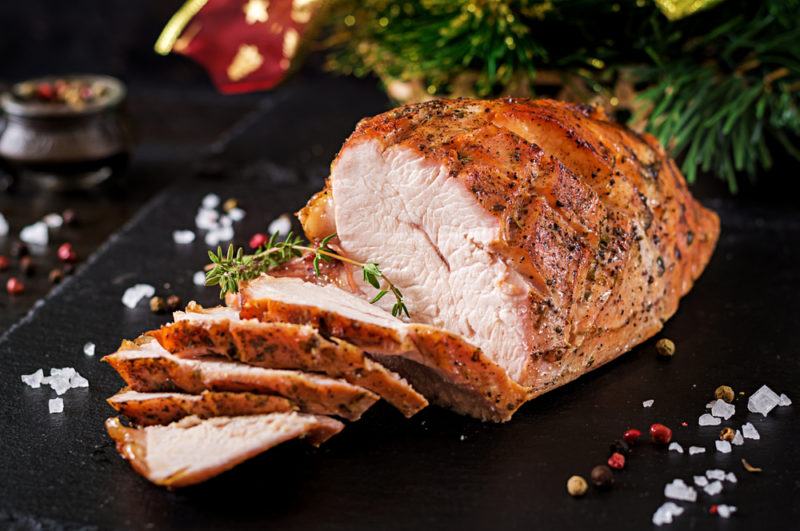
You’ll get more iron from red meat than from turkey, but turkey will still offer you some. If nothing else, turkey is a good choice for people who don’t enjoy red meat.
The iron content varies depending on the part of the turkey that you’re eating. Dark turkey meat contains close to twice the amount of iron that light turkey meat, so bear that in mind when you’re sitting down for a meal.
Turkey is lighter than red meat. Some people find that they feel somewhat bloated after a red meat meal, but not after one that relies on poultry as the primary source of protein. This distinction might be relevant if you hate heavy meals or if you are watching your calorie intake.
Chicken

Chicken and turkey have similar amounts of iron. The two types of meat have comparable advantages too.
The biggest difference may simply be that chicken is often relatively inexpensive. This makes it appealing for families on a budget. The mild flavor of chicken also means that it can be used in countless meals.
Shellfish

All types of shellfish are high in iron. However, the nutritional profile will be different depending on the shellfish that you choose. Mussels and oysters are especially good choices.
You can also turn to clams. Clams are often high in iron, but the amount varies depending on the type of clam.
Shellfish offer other advantages too, such as being high in protein. The iron is heme iron, so it can easily be absorbed by your body.
Eggs

Eggs are decent sources of iron, offering you roughly 1 mg of iron per serving. This is admittedly less than some other items on this list, but the iron content does still add up.
Eggs are also easy to add to your diet. There are many ways to prepare them, some of which take barely any time at all. You’re getting many other nutrients at the same time too.
Fish
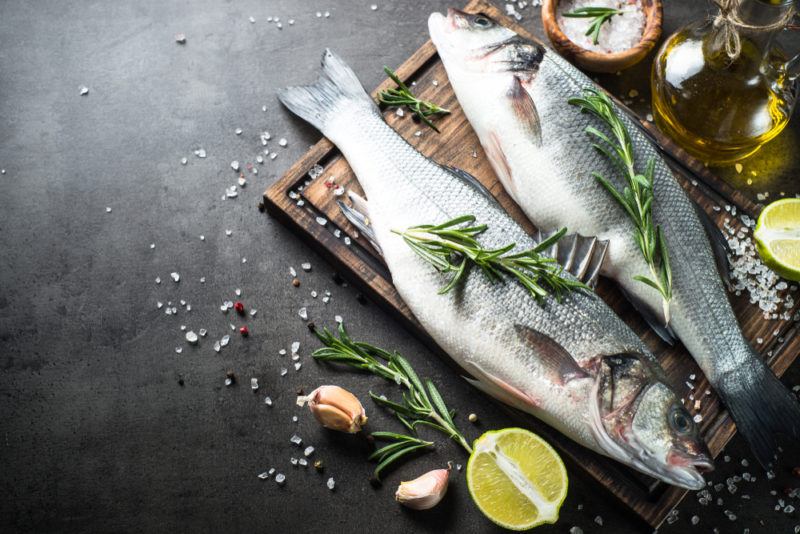
Fish is extremely healthy. There’s no doubt about that. Recommendations still suggest we should be eating at least one serving of fish per week, if not more.
The main reason is the omega-3 fatty acids that are found in fish. These have important health implications and other compounds simply don’t have the same impact. Improved brain health, cognition, and decreased risk of depression are just some of the potential benefits of eating fish regularly.
Then there are all the other nutrients in fish, including iron. The amount of iron varies depending on the type of fish. Sardines and tuna are particularly good choices.
Other types of fish, like salmon, have some iron, but you’ll generally be getting less iron per serving.
Dark Leafy Greens

Dark leafy greens, like spinach, offer many essential nutrients and are often considered a key part of a healthy diet. Their iron content is a crucial aspect of this.
In fact, spinach is often recommended as a way to increase iron intake. And, with 3 mg of iron per half-cup serving, it’s easy to see why.
Despite the many advantages of dark leafy greens, they shouldn’t be relied on too heavily as a source of iron. Some compounds present inhibit the absorption of iron, so you won’t get as much iron from your greens as you might expect.
You can increase iron absorption by eating foods high in vitamin C at the same time as your iron-containing foods. A glass of orange juice would work as well.
Broccoli

Broccoli offers roughly 1 mg of iron in a cup serving. This might not sound like much, but it is still more iron than many other vegetables.
Besides, you don’t need to get all your iron in one place. Having many different sources of iron ends up being more powerful in the end, as each source has its own nutritional advantages.
With broccoli, you’re also getting a surprising amount of vitamin C. This vitamin C is good for you in its own right and also helps you to absorb the iron. There is fiber present too, along with beneficial plant-based compounds.
Tofu
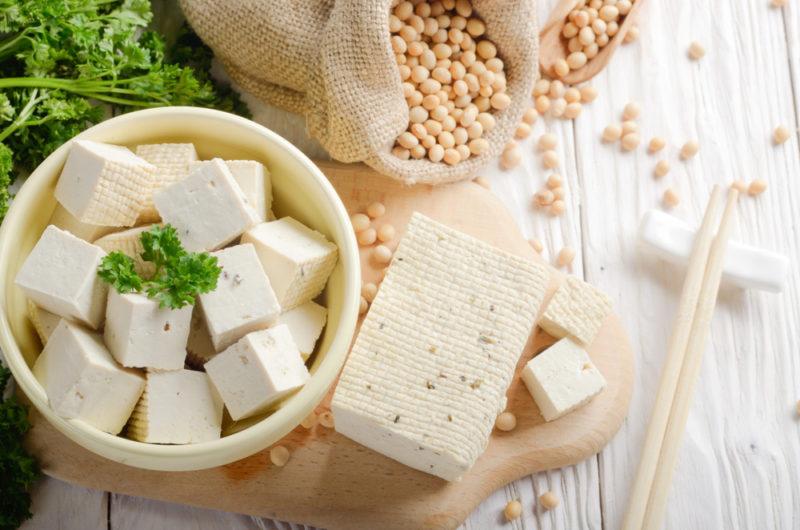
Tofu is particularly popular among vegetarians and vegans, as it provides a non-animal source of protein. But, you don’t need to be a vegetarian or vegan to eat tofu. The product works well for other diet types too.
As for iron, a half-cup serving of tofu provides almost 3.5 grams of iron. It also contains compounds called isoflavones, which may help reduce menopause symptoms and improve health in other ways.
Quinoa

You’ve probably heard about quinoa by now. This seed is often called a superfood. Despite being a seed, it is cooked and served like a grain – earning it the title pseudocereal.
Quinoa is easy to prepare. The seed is simply boiled for around 15 minutes, generally with a ratio of one cup quinoa to two cups liquid. Spices or stock can be used to add flavor, although quinoa does have a slightly nutty flavor of its own.
One cup of cooked quinoa provides a little under 3 mg of iron. Quinoa is also high in protein and is a better source of antioxidants than many grains.
Because quinoa is so nutritious, it is often used instead of rice as a side dish. Quinoa salads are another way to enjoy the seed.
Baked Potatoes

Baked potatoes might be an unexpected entry to this list, but a medium baked potato does contain roughly 2 mg of iron (if you eat the skin as well as the flesh).
You’re probably not eating a baked potato on its own either. You might be pairing it with some veggies and meat, both of which will be offering you some more iron.
Beans

Legumes are a reliable source of iron for vegetarians and vegans. Beans are a common choice, as they store easily and can be cooked in many ways.
While the iron content will vary depending on the type of bean that you choose, you’re often looking at around 10% of your daily intake from half a cup of cooked beans. This works out well, as beans are easy to include in meals.
There’s no shortage of variety either. Black beans, kidney beans, navy beans, and pinto beans are just some examples of beans that you might turn to. These are all a good source of fiber and protein too, helping to create a satisfying meal all around.
Chickpeas

Chickpeas are mostly known as an easy-to-use legume that acts as the base for hummus and falafel, and can also be included in many different meals. Indeed, chickpeas have a long history and don’t get the same buzz that many more newly discovered foods do (like quinoa).
Even so, chickpeas are a good source of many important nutrients, including iron. A 100 gram serve of cooked chickpeas gives you more than 20% of your daily iron requirements. You’re also getting a decent amount of fiber and protein at the same time.
Lentils

Lentils are another classic choice by people who hope to increase their nutrient intake. They’ve also started to see a comeback in recent years, as more people realize just how powerful lentils are as an ingredient.
Their iron content is one reason that lentils are popular. A cup of cooked lentils offers more than 6 mg of iron, giving you roughly a third of your recommended daily intake.
There are other advantages too, as lentils are high in protein and fiber. This makes them filling and perfect for anyone trying to lose weight.
Dark Chocolate

Dark chocolate isn’t just a delicious treat. Research is beginning to show that dark chocolate truly can improve health, with effects such as lowering cholesterol and decreasing the risk of heart attacks.
Many of these benefits come from flavanols in the chocolate. The amount of flavanols present is linked to the cocoa percentage of the chocolate. It’s best to focus on chocolate that is at least 70% cocoa, ideally higher.
As for iron, you’re getting a little under 3.5 mg of iron per serving, along with significant amounts of magnesium and copper. There is even some prebiotic fiber present, which acts as food for gut bacteria.
The amount of iron is likely to vary from one brand to the next. So, as always, it’s important to check the ingredients label to be sure that you get what you’re looking for.
Pistachio Nuts
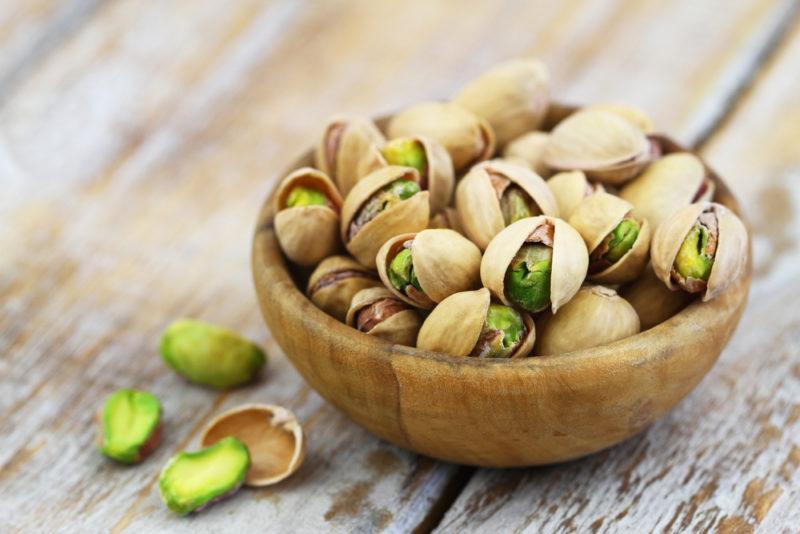
Pistachio nuts are, by far, the best type of nut for iron. They contain around 14 mg of iron per 100 grams of nuts, which is far more than any other kind of nut.
Pistachios also happen to taste delicious. They’re full of protein and healthy fats as well, making them an ideal snack.
Pumpkin Seeds

Pumpkin seeds are an easy and delicious snack on the go. A one ounce serving of the seeds provides around 14% of the suggested daily intake for iron, which is impressive for such a small amount.
You’re getting a considerable amount of magnesium per serving too, not to mention the protein and antioxidants.
Dulse

Dulse is a type of seaweed that you can purchase dried or as a powder in some stores. It has a long history of being harvested and eaten wild, but is only just starting to hit the mainstream.
One exciting feature is that dulse tastes a little like bacon when it is fried. This could be a way to get more people to try seaweed for themselves and makes it easier to include dulse in meals.
The seaweed is a useful source of iron and potassium, while offering some fiber and protein too. If you’re a little nervous about seaweed, you can always start by eating tiny amounts and move on from there.
Iron-Enriched Foods

Many foods are now enriched with non-heme iron. Breakfast cereals are the most common example. Some of these even contain your entire recommended daily iron intake in a single serving.
These foods are an option if you can’t get iron any other way, but it’s always best to rely on whole food sources of iron.
If you are going to use enriched foods, make sure that the food you’re eating is healthy in its own right. This is particularly true for breakfast cereals, as many of these contain various additives and have high sugar content.







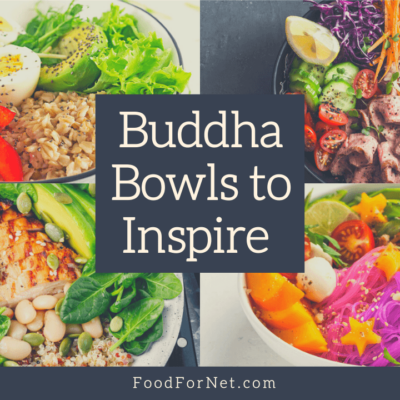







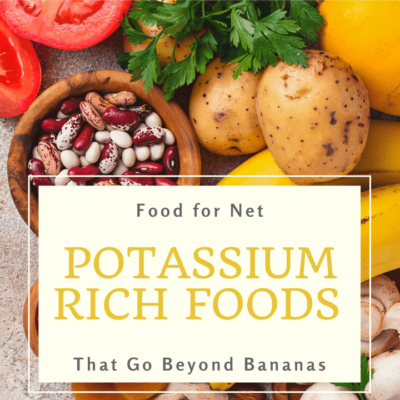

 46 Fantastic Healthy Smoothie Ingredients And Add-Ins
46 Fantastic Healthy Smoothie Ingredients And Add-Ins
Leave a Reply